From concept to clearance…
We lead, support, or supplement your product development effort at all stages of the product lifecycle— we integrate seamlessly with your team to help make your products come to life.
We sweat the compliance
so you don’t have to.
Product Development is at the heart of bringing innovative medical devices to market, ensuring they meet user expectations and comply with stringent regulations. Our approach integrates robust design control processes and meticulous documentation from the outset, enhancing your device's path through regulatory approvals and FDA audits. With our expertise, we guide you through every step of this intricate journey of FDA compliance, focusing on creating a device that is not only safe and effective but also perfectly aligned with its intended use. Let us partner with you to transform your vision into a reality, navigating the complexities of product development to achieve excellence in healthcare solutions.
-
The Design History File (DHF) contains all Design Controls, including Requirements, Design Inputs, Design Outputs, Risk Management and Usability. We offer DHF creation or remediation services to set your product development on the right path for approval.
-
Every successful medical device starts with well defined marketing and product requirements. User needs are the specific requirements that undergo Design Validation.
-
We perform all the necessary risk management activities to comply with ISO 14971, including Risk Assessment, Hazard Analysis, Failure Mode Effect Analyses (FMEAs), and risk mitigation and testing.
-
We ensure your device undergoes the proper user evaluations to comply with IEC 62366. Formative and summative usability evaluations formally document the interaction and feedback from your device users for FDA review.
-
It’s not enough to simply write the code for your device. Software development for medical devices that follows IEC 62304 ensures that your software output will withstand scrutiny from FDA and other regulatory bodies.
-
Product design does not end with the device itself. Every medical device requires labeling that complies with the appropriate standards and FDA guidance. Whether durable or disposable labeling, instructions for use, Unique Device Identification (UDI)— we ensure your product labeling is clear, complete, and compliant.
Product Testing
Product Testing stands as a pivotal phase in the lifecycle of medical devices, particularly in meeting FDA standards for safety and efficacy. Our specialized focus on formal verification testing subjects each device to a comprehensive evaluation, rigorously assessing its performance against predefined criteria and regulatory requirements. This critical step not only supports successful FDA submissions but also reinforces the trustworthiness of your device in real-world applications. By partnering with us, you gain access to an expert team dedicated to navigating the complexities of product testing. We commit to meticulously validating your device, ensuring it meets the highest standards of quality and reliability before it reaches those who depend on it most.
-
We will develop a solid design verification strategy that includes testing and analysis. We ensure product undergoes testing considering worst-case conditions and with statistically valid sample sizes.
-
Ensure your device fulfills the User Needs in a simulated use environment with real users.
-
Our team has extensive experience designing products and developing the documentation to support those products to comply with the appropriate standards which pertain to medical devices. We have a track record of success demonstrating compliance to the following standards:
ISO 13485 - Medical devices — Quality management systems
ISO 14971 - Medical devices — Application of risk management to medical devices
ISO 10993 - Biological evaluation of medical devices
ISO 10555 - Intravascular Catheters
IEC 60601-1 - Medical electrical equipment
ISO 14708 - Implants for surgery — Active implantable medical devices
IEC 62366 - Application of usability engineering to medical devices
IEC 62304 - Medical device software
ISO 11607 - Packaging for terminally sterilized medical devices
ISO 11135 - Sterilization of health-care products
ISO 15223 - Medical devices — Symbols to be used with medical device labels
IEC 61010-1 - Safety Requirements for Electrical Equipment for Measurement, Control, and Laboratory Use.
ISO 80369 - Small Bore Connectors for Liquids and Gases in Healthcare Applications
FREQUENTLY ASKED QUESTIONS
-
Design History File (DHF): contains all Design Controls, including Requirements, Design Inputs, Design Outputs, Risk Management and Usability. This compilation of documents describes how the device was designed and developed.
Device History Record (DHR): The compilation of records that described what you did to make a particular device in the manufacturing process. This includes information such as the date of manufacture, the quantity manufactured, acceptance records, labeling/UDI information. etc.
Device Master Record (DMR): The DMR documents everything you need to know in order to build a device. This includes information such as device specifications/drawings, process specifications, production methods and procedures, quality assurance procedures, etc.
-
The answer is: it depends. Some Class I devices are not subject to formal design and development planning, formal documentation of design inputs or design reviews. A thorough review of the proposed device and its product code will inform the proper development strategy and scope.
-
Yes! We have extensive experience in Design Controls for both medical devices as well as in-vitro diagnostics. Many of the same regulations and core concepts of a Design History File apply to both areas, and we offer the experience and expertise to distinguish the differences between the two.




